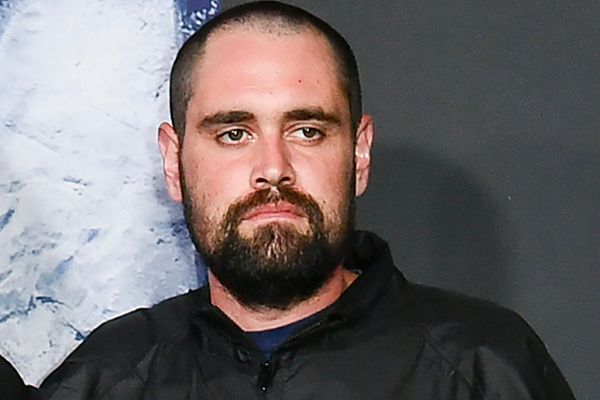
For many companies in media & entertainment, sustainability is more than a word: It’s a mission for these manufacturers who are taking serious steps to become more sustainable and environmentally responsible in their business practices. Here are some views of how the industry is doing in attaining sustainability, from some of the people making it happen.
The Big Picture
The drive towards sustainability in television touches upon two key areas: The production and distribution of TV content via broadcasting, streaming, and other delivery systems. The other is the various consumer devices that access and display this content.
Let’s start with TV content production and distribution. Thanks to framework organizations such as WeAreAlbert, (an environmental organization aiming to encourage the television and film production industry to reduce waste and its carbon footprint), or consultancies like Mrs. GreenFilm, the industry is seeing more productions taking steps to promote and impose sustainable practices on set, according to François Polarczyk, sustainability director for Accedo.

“Connecting directly to the grid, hiring local crew to avoid travel, and promoting the ‘Reduce, Reuse, Recycle’ loop in costumes and set buildings are the top criteria to me,” he said.
Polarczyk points to the Responsible Media Forum (RBF) as one of the leading organizations promoting sustainability in media, with members such as the BBC, Bauer Media Group, NBCUniversal, Sky, Virgin Media, and Warner Brothers Universal backing its efforts. The RBF’s sustainability initiatives include DIMPACT (an online tool for calculating the carbon emissions of digital content’s downstream value chain) and media sustainability conferences such as “Mirrors or Movers.”
“The streaming industry is responsible for 3–4% of global CO2 emissions,” he said. “DIMPACT is looking at providing a methodology to assess and reduce energy consumption of the media chain.”
“There are more and more initiatives that have started and aim to shine a light on being more responsible with the resources our planet offers,” agreed Chris Brähler, vice president of product for SDVI. “For example, the DPP [Digital Production Partnership] has been leading the way with their ‘Committed to Sustainability’ campaign, while other bodies like the NAB Show recently introduced sustainability-focused awards to increase visibility.”

V-Nova is a member of the Greening of Streaming group and the chair of its compression working group, which is working with Low Energy Sustainable Streaming (LESS) Accord recommendations to help streaming services reduce end-to-end energy consumption.
In order to become more sustainable, the streaming industry should first focus on ways to reduce the utilization of existing systems, said Sam Orton-Jay, V-Nova’s vice president of product.

“One possibility is rolling out better encoding technologies to reduce transcoding power requirements and the amount of data we deliver, to enable some reduction in required storage and delivery infrastructure over time” he said. “Secondly, a major part of the discussions so far on the LESS Accord has been the idea of a ‘Good enough’ quality of service that considers energy usage rather than simply prioritizing quality at all costs. Try to evaluate if you are delivering higher resolutions to certain devices than they really need. Finally, start asking key sustainability questions both of internal teams and external vendors alike. It is one of the most powerful tools we have at our disposal at this stage.”
From the Consumer Side
As for consumer products such as Smart TVs and other devices, and their impact on the environment as new models are purchased and older models that end up in landfills?
“Consumers are becoming increasingly aware of the impact of their purchasing decisions, and so are many manufacturers who are choosing to offer more sustainable goods, build out ESG (environment, social, and governance) strategies and report on their environmental efforts,” replied Patty Minichiello, global brand experience manager for TMT Insights.

As well, “consumer brands are making strides in reducing packaging and plastics in their product and some offer buyback programs for old tech, such as Apple,“ SDVI’s Brähler added. “But a lot more can and has to be done in this area, with different countries looking at legislation to force behavior.”
It's not just television production and distribution that needs to become more sustainable, but the influence that this industry exerts on society as a whole.
For instance, “advertising and monetization from a wider perspective needs to be taken into account,” Polarczyk observed. “It is not only producing and delivering advertising that has a huge impact in terms of carbon emissions; the content of advertising also needs to be taken into account. For example, seeing an advert for New Zealand tourism if you’re based in London will have another impact, compared to seeing promotions around local farms to visit.”
Individual Efforts
Each of these companies have publicly committed themselves to pursuing sustainable business practices in the TV industry. Such sustainability commitments are prominently posted on their respective websites, and typically spelled out in very clear detail.
Case in point: “At Accedo, we recently launched our ‘Sustainable Marketplace’ to help vendors build their video applications leveraging sustainable vendors and products,” said Polarczyk. “It enables video service providers to make buying decisions based not only on product features, but also on sustainable KPIs (key performance indicators) to cover carbon emissions reduction, audience influence, and community impact.
In order to make meaningful progress towards sustainability, technology buyers need to make it mandatory, rather than a plus or an option."
Gordon Brooks, Zixi
“We also released a new study, which looked at the energy usage of various streaming devices and a number of popular streaming applications. It uncovered some key areas of actions and guidelines to reduce energy usage of video devices.”
ATEME is another company that has taken a proactive approach. In 2021 it launched its Green Delivery solution, an integrated end-to-end tool designed to allow OTT and DTH operators to reduce their video delivery carbon footprint. Green Delivery brings together carbon-efficient components to reduce hardware requirements, bandwidth usage and energy consumption.
(Read: NAB Show Launches Excellence in Sustainability Awards)
SDVI’s sustainability efforts are largely centered around saving power, which means better utilization of the infrastructure used for content processing, according to Brähler.
“This can firstly be done by using the public cloud, as sharing compute and storage resources inherently means using less energy,” he said. “If I don’t process something on that machine, someone else is, and it‘s not just sitting there idle but still using energy. If I then optimize my supply chain and eliminate duplicate work and more efficiently use the resources at hand, I save even more energy. Lastly, choose a vendor that uses data centers and cloud providers that invest in green energy, so that even when I use less energy because even after I optimize my operations, the little energy I do use is created carbon free.”
V-Nova’s commitment to sustainability is inherent in their MPEG 5, Part 2 LCEVC (Low-Complexity Enhancement Video Coding) streaming solution, which the company says enhances the performance of existing codecs to reduce energy consumption during transcoding by up to 70%, while augmenting compression efficiency by up to 40%.
“It’s encouraging to hear how much the sustainability of video workflows is now on the agenda for our customers,” said Orton-Jay. “Even if not immediately so, they certainly engage when we bring up the significant savings that can be made in the energy consumption of their systems thanks to optimizations in their video compression technology. The fact that it often goes hand in hand with cost reduction tends to help too.”

This “doing more with less” approach is also being pursued by Zixi. ”We’re making our software cost-effective with 14x less CPU than other solutions in the market, 10x port efficiency, and virtual machine efficiency—requiring 50% less computing power,” said Gordon Brooks, CEO of Zixi. “All of these innovations combined save customers money, making our solutions highly sustainable and attractive in procurement.”
“In order to make meaningful progress towards sustainability, technology buyers need to make it mandatory, rather than a plus or an option—it needs to be a qualification of the procurement process,” he added. “And then, as a supplier it’s on us to do everything possible to be as sustainable as cost-effective to make it as attractive as possible.” l







